
Most Admired Champagne Brands 2017: 16-30
To continue our list of The Most Admired Champagne Brands, here is 16-30
16. PERRIER-JOUËT
When I met up with chef de cave Hervé Deschamps last month, I asked him for a brief summary of what Perrier-Jouët is all about. The thoughts he proffered were: “White flower, stylish and sea- salt.” I’d just been tasting the newly launched Belle Époque Brut Vintage 2008 with him and, while that wasn’t exactly my tasting note, all those things are evident in the fine, dazzling, fresh 2008 release. It’s perfumed, with a noticeable grip and mid-palate chalky intensity. And no one would say it lacked style. It plays between the elegance and freshness of Chardonnay from Cramant, Avize, Chouilly, Mesnil and Vertus, set against the power and structure of Mailly, Verzy and Verzenay Pinot Noir. “But don’t forget the 5% Dizy Pinot Meunier,” says Deschamps. “It acts as a link between the two, like the hyphen between Perrier and Jouët.”
salt.” I’d just been tasting the newly launched Belle Époque Brut Vintage 2008 with him and, while that wasn’t exactly my tasting note, all those things are evident in the fine, dazzling, fresh 2008 release. It’s perfumed, with a noticeable grip and mid-palate chalky intensity. And no one would say it lacked style. It plays between the elegance and freshness of Chardonnay from Cramant, Avize, Chouilly, Mesnil and Vertus, set against the power and structure of Mailly, Verzy and Verzenay Pinot Noir. “But don’t forget the 5% Dizy Pinot Meunier,” says Deschamps. “It acts as a link between the two, like the hyphen between Perrier and Jouët.”
It’s the fifth release of white Belle Époque in a seven-year period. Since the beautifully balanced 2002, only 2003 and 2005 are missing. If you had to pick out a pair of them it would be ’02 and ’08, attractive and enjoyable though the ’04 and ’06 vintages were, even on the basis of this brief look at 2008.
If they had still been making a straight vintage Perrier-Jouët, both 2008 and 2009 versions of that would have been made, says Deschamps, and an interesting comparison possible, just as it was between the austere 1988 and the voluptuous 1989. But 2009 was too ripe to make Belle Époque, it lacked elegance, he says and it will be 2010 that follows instead.
17. LAURENT-PERRIER
When you are trying to assess the quality of a major brand, the wine you need to examine most closely is the non-vintage Brut style. This is the wine that consumers are by far the most likely to come  across, as it typically represents well over 80% of any house’s production. And it’s the cuvée the chef de caves labour over most intensely, as they try to maintain both the style of the house and reproduce a wine that has the same taste profile year after year, whatever the harvest gives them.
across, as it typically represents well over 80% of any house’s production. And it’s the cuvée the chef de caves labour over most intensely, as they try to maintain both the style of the house and reproduce a wine that has the same taste profile year after year, whatever the harvest gives them.
In early 2002 I visited Laurent-Perrier when Alain Terrier was still the chef de cave, as he wrestled with the pretty ordinary material the 2001 harvest gave him to blend the LP non-vintage with. In a fascinating tasting of vins clairs (still wines from the 2001 harvest) and reserve wines going back to 1996, he showed me a selection of the building blocks he was going to use.
He explained that Chardonnay was the key to the blend, making up 45%-50% of it, probably slightly more in a difficult vintage such as 2001.
“It brings pureness, vivacity and elegance to the blend” – still key elements for the Laurent-Perrier style as current winemaker Michel Fauconnet, who worked with Terrier for nearly two decades before he took over, will concur.
18. DEUTZ
One of the best ways of learning about Champagne and its wines is to taste as often as possible with different winemakers at small and large producers alike. Once they see you are  genuinely interested in their work and the magic they weave they are usually happy to share some of their secrets.
genuinely interested in their work and the magic they weave they are usually happy to share some of their secrets.
It’s always great to spend time in the beautiful tasting room at Deutz with Michel Davesne. Like the wines, he’s calm and understated, but he’s brought a new level of consistency and expression to the cuvées in the range, from the textbook three-way non-vintage Brut Classic blend to the luxurious, velvety palate of Amour de Deutz Blanc de Blancs.
Brut Classic, currently 2013 harvest-based with a large 45% slug of 2012 reserve wine, is showing real zip, grapefruit zestiness with some creamy mid-palate texture developing. Davesne thinks it has great potential to age and suggests tucking away some magnums, now on the same blend.
The 2010 Blanc de Blancs vintage made from Le Mesnil, Avize and Chouilly Côte des Blancs fruit, married with richer Villers-Marmery Chardonnay, also has good ageing potential. In this December tasting the star act is the younger 2012, Pinot Noir dominated Brut Vintage, already attractively ample and generous in style, with a distinct spiciness. You may have to wait until later in 2017 for the first chance to taste it.
19. MOËT & CHANDON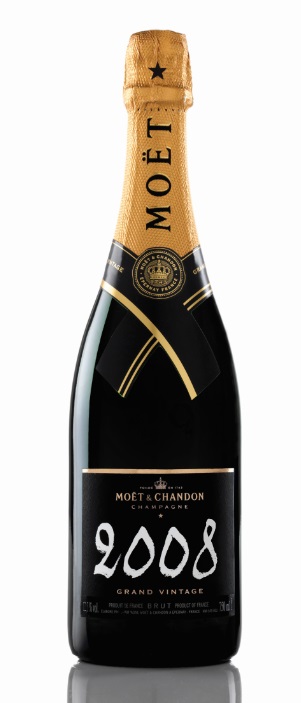
It’s important for the market leader in champagne to keep generating interest in the category through its marketing initiatives, striving to improve quality and by innovating. Moët & Chandon scores well judged by any of these criteria. The brand was busy in 2016 introducing the first global Moët Day on June 11, the culmination of the house’s Now Campaign, which was launched in late 2015, “to bring the brand to life in a way that is modern, fresh and vibrant”.
The date relates to the first F1 champagne spray by Le Mans winner Dan Gurney on that day in 1967, when he celebrated his win by spraying his trophy Jeroboam of Moët & Chandon. So was born a dubious practice every F1 podium winner feels duty bound to follow. Personally I’d rather drink it, as Moët Brut Impérial in magnum always seems a notable step up in quality, freshness and depth of flavour.
June 11 was also used to bring attention to Moët’s new Ice Impérial Rosé, a pink partner to Blanc Ice Impérial launched a few years ago. Moët hasn’t forgotten its serious credentials launching Grand Vintage Blanc and Rosé 2008, the white reminiscent for head winemaker Benoît Gouez of the great 1988 vintage, in that it’s fresh, linear and focused. A wine with a long future.
20. LANSON
There’s been plenty of exciting activity at Lanson over the past 12 months and more to come with an organic champagne based on the 2012 harvest in the offing. Cellarmaster Hervé Dantan is starting to enjoy his relatively new role at the helm. When I met up with him in early December, we tried the new 2008 Gold Label Vintage and the current Extra Age Blanc de Blancs release.
Cellarmaster Hervé Dantan is starting to enjoy his relatively new role at the helm. When I met up with him in early December, we tried the new 2008 Gold Label Vintage and the current Extra Age Blanc de Blancs release.
The Extra Age range is a great success for Lanson, and all three blends – the Brut, the Rosé and this Blanc de Blancs – have been showing very well when tasted over the past couple of years. A blend of three different vintages, currently 2003, ’04 and ’05, this all-Chardonnay blend is impeccably sourced from four Grands Crus in the Côte des Blancs – Le Mesnil-sur-Oger, Oger, Cramant and Avize. Rich and expressive, it has a lovely, silky texture and yet it retails at a bargain price of around £50 in the UK.
The ’08 vintage, a 53% Pinot Noir, 47% Chardonnay blend, has a comparably high quality Grand Cru origin – Mesnil, Avize and Trépail for Chardonnay, Verzenay, Aÿ and Bouzy for Pinot Noir – Lanson likes to use Rolls Royce vineyard material and this pays off in the glass.
Fresh, sherbetty and spicy, it’s an exhilarating drink in its youth.
21. LE MESNIL
Some commentators consider Le Mesnil-sur-Oger to be the finest cru in the Côte des Blancs. In the right hands, it certainly produces some of the most impressive, long-lived wines in Champagne. This is a cru where all the major négociant merchants want to buy grapes to incorporate into their best cuvées. One of the best sources of material is the Le Mesnil co-operative, whose 500 or so grower members own a considerable chunk of the land.
You can tell this is a successful operation simply by driving through the village. It’s located bang in the centre with very impressive-looking state-of-the art premises. You expect its own wines to be decent and they really are. If you want to experience top Le Mesnil Blanc de Blancs styles of fizz, without taking out a bank loan, this is probably the best address to visit there. Head winemaker Gilles Marguet has some fabulous material to select for his wines, even though they represent only around 10% of production. The regular Le Mesnil Grand Cru, last tasted in a very impressive line-up of champagne in London at Berry Bros & Rudd in October, still scored my highest mark, despite being beside wines more than twice the price.
22. AYALA
It’s now more than a decade since Bollinger bought the house of near neighbour Ayala in Aÿ. It’s undergone quite a few changes in that time, the latest being the installation of new chef de cave Caroline Latrive, in 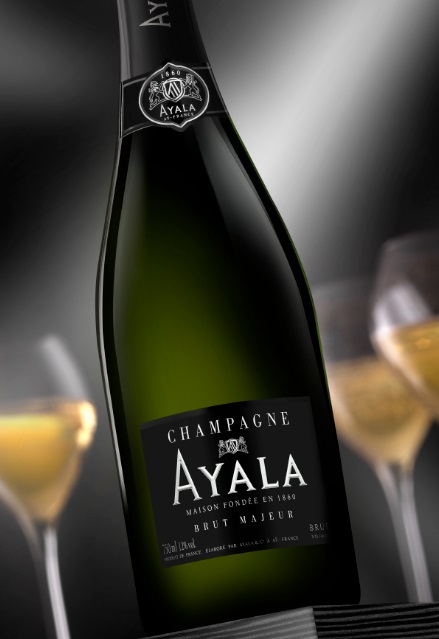 2014. Female head winemakers are still something of a rarity in Champagne, but that is gradually changing. This new young team under managing director Hadrien Mouflard, himself only four years in the job, continues the task of establishing the brand’s identity and keeping it from being overshadowed by its illustrious neighbour. Happily, the wines are very different in style to Bollinger’s, seeing no oak, while the quality is good across the range. Importantly in the very competitive market for small houses – Ayala shipped 800,000 bottles in 2016 – the quality-to-price ratio at Ayala is high.
2014. Female head winemakers are still something of a rarity in Champagne, but that is gradually changing. This new young team under managing director Hadrien Mouflard, himself only four years in the job, continues the task of establishing the brand’s identity and keeping it from being overshadowed by its illustrious neighbour. Happily, the wines are very different in style to Bollinger’s, seeing no oak, while the quality is good across the range. Importantly in the very competitive market for small houses – Ayala shipped 800,000 bottles in 2016 – the quality-to-price ratio at Ayala is high.
French domestic sales dominate, with the UK as the first export market, while Scandinavia, Spain and particularly Japan also feature. A new pink fizz in the shape of Rosé No.8 – a 50/50 Chardonnay/Pinot Noir blend, from eight different crus from the impressive ’08 vintage, with 8gms/l dosage – was launched last year with the Asian market very much in mind. A bespoke label created for Gordon Ramsay restaurants called Brut Majeur Extra Age, with an extra year on its lees, was another innovation in 2016.
23. GH MUMM
A move up the Most Admired brand list is partly a reflection of all the good work done on the GH Mumm wines over the past decade, most recently by head winemaker Didier Mariotti. Re-establishing 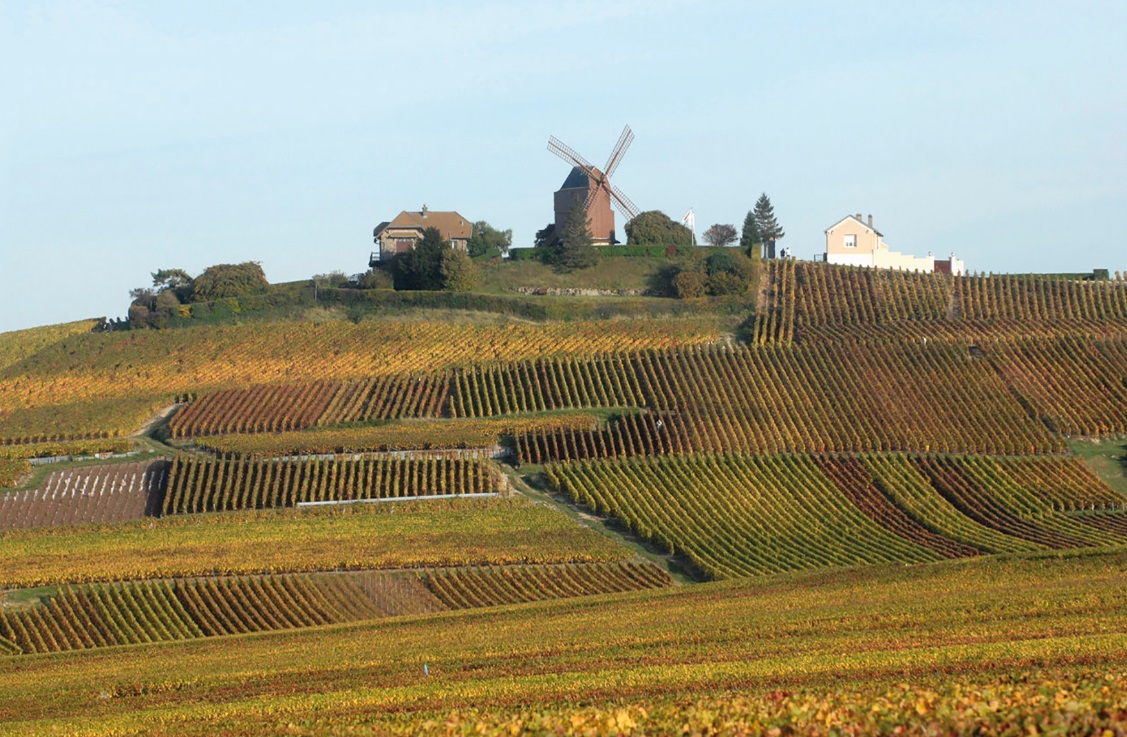 the consistency and quality of the mainstream Cordon Rouge cuvée was a necessary first step he and his predecessor, Dominique Demarville, worked on together. Since taking charge he’s been able to refine both the straight vintage, expected to move to 2009 this year, and prestige label ‘R’ Lalou. But his new creation, Mumm de Verzenay Blanc de Noirs, didn’t appear to be a priority for owner Pernod Ricard, despite its obvious potential for those who tasted the first limited release.
the consistency and quality of the mainstream Cordon Rouge cuvée was a necessary first step he and his predecessor, Dominique Demarville, worked on together. Since taking charge he’s been able to refine both the straight vintage, expected to move to 2009 this year, and prestige label ‘R’ Lalou. But his new creation, Mumm de Verzenay Blanc de Noirs, didn’t appear to be a priority for owner Pernod Ricard, despite its obvious potential for those who tasted the first limited release.
That’s now changed and it’s been sensibly paired with Mumm Blanc de Blancs – a single Grand Cru Chardonnay – with both wines relaunched under the distinctive and striking RSRV label as premium vintage cuvées. Maison Mumm Blanc de Noirs RSRV is from the impressive 2008 vintage, while the new Mumm de Cramant vintage release will be 2012 – this wine has always come from Mumm’s best vineyards in the heart of the Cramant Grand Cru and has gone under various names over the years, the most meaningful of which was Crémant de Cramant. These two wines will only be sold directly to private customers given access to a special mail order site, but are definitely worth exploring.
24. CANARD-DUCHÊNE
The major brand in volume terms in the Champagne Thiénot group, Canard-Duchêne is pushing sales towards the 4.5m bottle mark. This could not have been done without the re-energising which has taken place over the past decade. Product innovation has been part of that process and a visit to the winery in Ludes with group managing director Stanislas Thiénot revealed a new organic, single vineyard wine, Parcelle 181.
This wine comes from a 12ha site of organically farmed, Ecocert certified, south-facing vineyard in Verneuil on the north side of the Marne Valley. It’s a 43% Chardonnay, 36% Pinot Noir, 21% Pinot Meunier blend, with some of the Chardonnay oak fermented, aged four years and Extra Brut in style. Bright and fresh, though not aggressive, this oak only imparts a subtle creamy texture. Winemaker Laurent Fédou has been experimenting with Argonne and Montagne de Reims oak barrels produced at the Jérôme Viard tonnellerie based in Cauroy les Hermonville to the north west of Reims.
Thiénot says that, while only about 250ha of 34,000ha in Champagne is farmed organically, interest is growing. Canard, with ‘organically certified’ champagnes in both its Léonie and Authentic ranges – around 120,000 bottles – is well placed to benefit from this trend. It’s a good way of recruiting new consumers and adding value.
25. NICOLAS FEUILLATTE 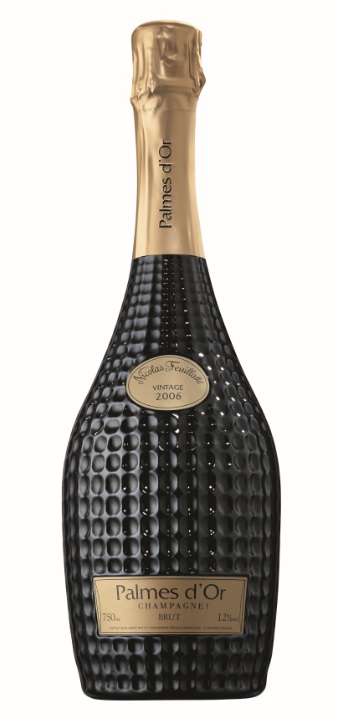
It’s good to see that our extensive international voting panel has recognised the forward strides Nicolas Feuillatte has made in the quality and consistency of its wines, across what is a considerable range of cuvées.
As one of the largest producers in Champagne, with the third biggest brand in terms of shipments after Moët and Clicquot, Nicolas Feuillatte exercises considerable muscle. One of its main strengths is drawing on the fruit from its 5,000 grower members, who are spread right across the appellation. This gives the winemaking team lots of options to draw on in making more than 20 different cuvées, ranging from the five non-vintage offerings, through Grand Cru single varietal and oak aged vintages, up to the impressive prestige cuvée Palmes d’Or.
The straight vintage releases offer terrific value. The new 2008 Blanc de Blancs is, mirroring the vintage, made in a crisper, more lifted style than the quite luscious ’06 it follows. The ’08 vintage works arguably better in the Brut Millésimé style, where two-thirds black fruit give more creaminess in the mid-palate. The 2006 Palmes d’Or is lovely now, with a velvety palate and real substance, but will develop more complexity with time. Magnums of ’99 currently available seem incredibly youthful, showing this is a wine that demands to be taken seriously.
26. ALAIN THIÉNOT
It’s now 40 years since Alain Thiénot, then a courtier in Champagne finding good sources of grape supply for other producers, bought his first vineyard – 6ha in the Grand Cru of Aÿ. He added plots in the Grand Cru of Le Mesnil-sur-Oger and these 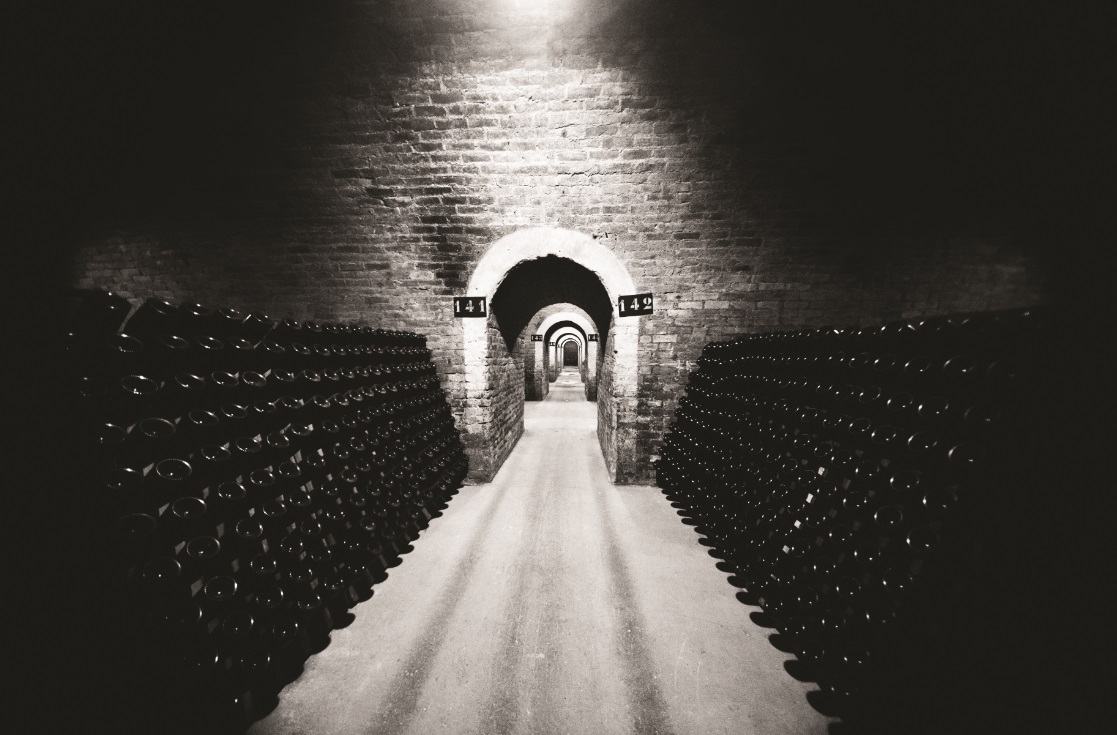 formed the basis for the house of Thiénot, founded in 1985.
formed the basis for the house of Thiénot, founded in 1985.
From the outset, the aim was wines dedicated to gastronomy and the on-trade. The vineyard holdings have been built to around 30ha in the best premiers and Grand Crus over the years and this supplies more than 80% of the grapes needed for producing around 350,000 bottles. This is a family operation, now run by Thiénot’s son, Stanislas, with his sister Garance also involved. Her meeting with street artist Speedy Graphito was the catalyst for a colourful, limited-edition magnum of Thiénot Brut NV, a wine that, thanks to four years ageing and a 45% portion of reserve wines in the blend, is a step up from most non-vintage offerings and especially good in magnum.
The three high-quality vintaged family cuvées, are all serious, age-worthy wines, a fact recognised in second releases of Cuvée Alain Thiénot, now on the celebrated 1996 vintage. The new 2008 ‘Garance’ Blanc de Noirs, a mix of Aÿ and Mailly Pinot Noir, really impressed when tasted in December.
27. PHILIPPONNAT
Charles Philipponnat, who runs this eponymous house and can trace his ancestors in the area back to Apvril le Philipponnat who owned vines there in 1522, has gradually reshaped this business over the past decade. He’s put the emphasis on Pinot 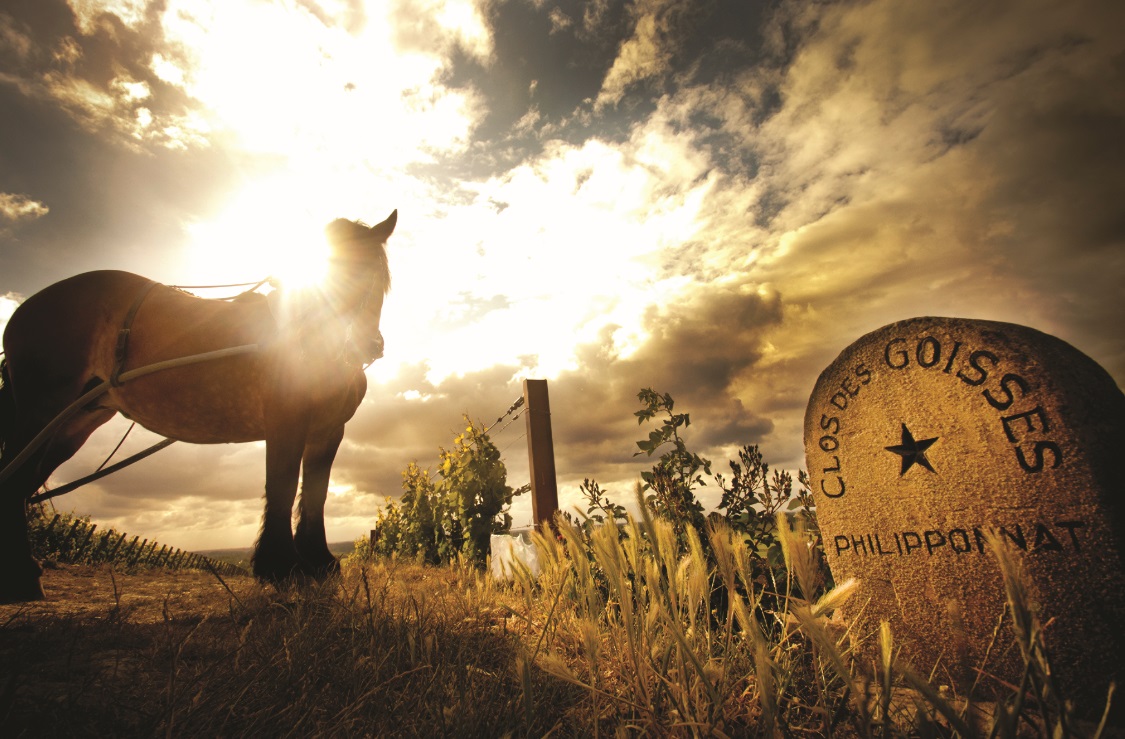 Noir, which is at the heart of most of the Philipponnat range, making up two-thirds of the Royal Réserve Brut blend and three-quarters of the Royal Réserve Brut Rosé.
Noir, which is at the heart of most of the Philipponnat range, making up two-thirds of the Royal Réserve Brut blend and three-quarters of the Royal Réserve Brut Rosé.
Its Pinot Noir credentials have been advanced by changing its straight vintage into a Blanc de Noirs with effect from 2008. This is a top-class blend – 60% from Philipponnat’s own 17ha of vineyards in Aÿ, Mareuil and Avenay, plus 40% from Mailly, Sillery and Verzy. Made in a very vinous style, as Philipponnat says he sees his champagnes as wines first and foremost. Two single vineyard Blanc de Noirs champagnes were produced in tiny quantities in 2006 in Mareuil-sur-Aÿ and a plot named Le Léon in Aÿ, where Apvril le Philipponnat owned vines nearby. Both are great, individual expressions of Pinot. The 2002 Clos des Goisses, a 5.5ha plot with a 45° incline facing due south, receiving no shade from sunrise to sunset and probably the warmest site in all Champagne, was the star of a recent 2002 prestige cuvée tasting in London.
28. JACQUART
The second largest cooperative grouping in Champagne can call on 1,800 grower members owning 2,400ha to supply material for the Jacquart brand. The winemaking team, ably led by Floriane Eznack, puts to good use the fruit supplied from 130 villages, including 10 Grands Crus and 22 Premiers Crus. She has improved Brut Mosaïque, making it better defined and fresher, while vintaged Blanc de Blancs style – which ages in an attractive way, often gathering unctuous richness over time – has long been a strength of the house.
by Floriane Eznack, puts to good use the fruit supplied from 130 villages, including 10 Grands Crus and 22 Premiers Crus. She has improved Brut Mosaïque, making it better defined and fresher, while vintaged Blanc de Blancs style – which ages in an attractive way, often gathering unctuous richness over time – has long been a strength of the house.
The crus used have varied widely in the past, with fruit from Villers-Marmery, Vertus and the Côte de Sézanne all included. The new 2009 vintage comes from just three Côte des Blancs Grand Crus: Cramant, Le Mesnil-sur-Oger and Oger. This may explain why, although ’09 is thought of as a warm, ripe vintage, the wine is currently on the fresh, linear side, though a certain smoky intensity suggests a long future.
Newcomer Mosaïque Signature is, as the label says, aged five years, the first release based on the 2010 harvest, with less focus on primary fruit notes. And Cuvée Alpha Rosé 2010 is an elegant, new pink partner for the prestige cuvée that has also moved to 2010, its third vintage. A bottle of the 2005 Cuvée Alpha consumed over Christmas was superb, evoking memories of Brut Nominée, its fine predecessor.
29. ALFRED GRATIEN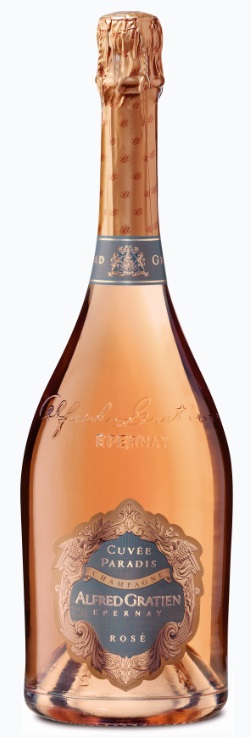
I visited the Alfred Gratien winery in Epernay on one of my very first visits to Champagne with a group of restaurateurs. They enjoyed the trip so much they gave me a magnum of the Brut on the way back to London and started a passion for champagne that continues today.
I’ve had a soft spot for the Alfred Gratien wines ever since, especially older vintages, several of which are still to be found in my cellar. This is a very traditional house that rejected the move to fermentation in stainless steel which most houses adopted in the ’60s and ’70s. It continued to ferment in 250-litre oak casks, bought second-hand from the Chablisienne cooperative in Chablis today, suppressing malolactic fermentation for further freshness and longevity. The Brut style is a three-way blend of 45% Chardonnay, 28% Pinot Noir and 27% Pinot Meunier, which gets at least three years’ bottle age before release, and gets better with even more.
The vintage wines are Grand Cru based and usually about two-thirds Chardonnay with similar portions of Pinot Noir and Meunier making up the blend. Cellarmaster Nicolas Jaeger is the fourth generation of his family to have the role. The Jaegers come from Reuil in the Marne Valley where Pinot Meunier is king and they see Meunier as an important element in their blends.
30. ARMAND DE BRIGNAC
The success of Armand de Brignac, much of which has been the result of celebrity endorsement, is hard to ignore. Smart, some might say ostentatious, packaging – a spin-off from the world of fashion  and design – has been an important part of it. As have big-format bottles, often opened in glitzy nightclubs by the rich and famous of the pop, fashion and sporting worlds. Rarity also plays a part, as in the release last November of the second Armand de Brignac Blanc de Noirs cuvée, just 2,333 bottles of which were created, each individually numbered. Each bottle also carries a disgorgement date.
and design – has been an important part of it. As have big-format bottles, often opened in glitzy nightclubs by the rich and famous of the pop, fashion and sporting worlds. Rarity also plays a part, as in the release last November of the second Armand de Brignac Blanc de Noirs cuvée, just 2,333 bottles of which were created, each individually numbered. Each bottle also carries a disgorgement date.
The Cattier family which elaborates them is a serious producer based in the village of Chigny-les-Roses where it has been cultivating vines since 1650. Father and son winemaking team Jean-Jacques and Alexandre, were in London in September 2015 to show off the first Blanc de Noirs blend, an all Pinot Noir blend of Grands and Premier Crus from 2006, 2008 and 2009. For the Armand de Brignac range, they have adopted the same three-vintage blend approach as they use on the Cattier 2.2ha single vineyard Clos du Moulin.
Is it worth the price? Luxury stores such as Harrods in London, Neiman Marcus in the US and De Bijenkorf in Amsterdam, have been quick to see the possibilities.
